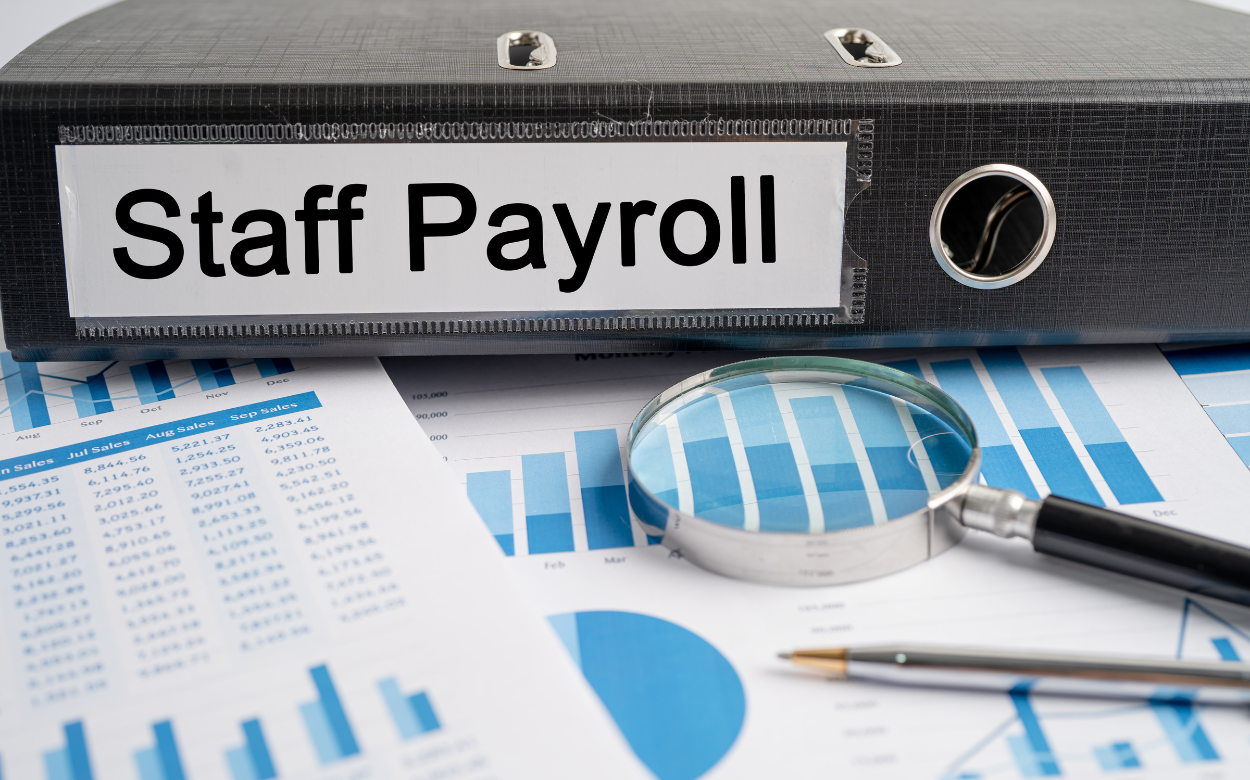Navigating the intricacies of R And D payroll tax credits can be a game-changer for businesses eager to save money and fuel growth. These credits, often misunderstood or overlooked, offer significant tax savings for companies engaged in research and development. By understanding how to claim R and D payroll tax credits, businesses can reinvest the savings into innovative projects and expand their operations. In this guide, we will demystify what R&D tax credits are and how they can benefit your business in 2024 and beyond. With expert tips and insights, you’ll gain the knowledge needed to take full advantage of these credits, and make informed financial decisions.
Understanding R and D Tax Credits
R&D payroll tax credits are a vital tool for businesses investing in innovation. This section explores the fundamentals of these credits, their benefits, and who can qualify for them.
What is R&D tax credit?
R& D tax credits are financial incentives offered by the government to encourage businesses to invest in research and development activities. These credits aim to foster innovation and technological advancement across various industries.
The purpose of R and D tax credits is to reduce the financial burden on companies that are pushing the boundaries of their fields. By offsetting some of the costs associated with R&D, these credits make it more feasible for businesses to take risks and explore new ideas.
R&D activities can include developing new products, improving existing processes, or creating innovative software solutions. The credits are designed to reward companies that are actively working to solve complex problems and drive progress in their respective sectors.
Benefits for Businesses
R&D tax credits offer substantial financial advantages to eligible businesses. These benefits can significantly impact a company’s bottom line and its ability to invest in future innovations.
One of the primary benefits is the reduction in tax liability. Companies can use these credits to lower their overall tax burden, freeing up capital for other important initiatives. This can lead to improved cash flow and increased financial flexibility.
Moreover, R&D tax credits can enhance a company’s competitive edge. By reinvesting the saved funds into further research and development, businesses can stay ahead of market trends and maintain their innovative momentum.
| Benefit | Description |
| Tax Reduction | Lower overall tax liability |
| Improved Cash Flow | More available capital for operations |
| Competitive Advantage | Ability to invest more in innovation |
| Talent Attraction | Showcase commitment to cutting-edge projects |
Eligibility Criteria of R&D Payroll Tax Credit
Understanding the eligibility criteria for R&D tax credits is crucial for businesses looking to take advantage of these incentives. The IRS has specific guidelines that determine which activities and expenses qualify.
To be eligible, a company must be conducting qualified research activities. These activities should aim to develop new or improved products, processes, software, techniques, or formulas. The research must be technological in nature and involve the hard sciences, such as engineering, physics, chemistry, or computer science.
Additionally, the research must involve experimentation to eliminate uncertainty and be conducted to discover information that is new to the company, not necessarily new to the industry. It’s important to note that routine product development or quality control activities typically do not qualify.
Companies should carefully review their R&D projects against these criteria to determine eligibility. Consulting with R&D tax credit specialists can help ensure accurate assessment and maximize potential benefits.
Navigating R&D Payroll Tax Credits
R&D payroll tax credits offer a unique opportunity for businesses to offset their research and development costs. This section delves into how these credits function within the broader tax framework.
How Payroll Tax Credits Work
R&D payroll tax credits allow eligible businesses to offset a portion of their payroll taxes using their R&D tax credits.
The credit is applied against the employer’s share of Social Security taxes. It’s important to note that this credit does not reduce the amount of Social Security taxes paid to employees or affect the employees’ future Social Security benefits.
Companies can claim up to $250,000 of their R&D credit against payroll taxes each year. This can provide substantial relief, especially for businesses with high R&D expenditures but limited profitability.
To claim the credit, businesses must file Form 8974 along with their quarterly payroll tax returns. The credit is then applied to reduce the employer’s portion of Social Security taxes owed for that quarter.
Integration with Federal Programs
R&D payroll tax credits integrate seamlessly with other federal programs designed to support business innovation and growth. This integration enhances the overall benefit for eligible companies.
For instance, R&D payroll tax credit can be used in conjunction with the federal R&D tax credit program. While the federal program primarily benefits profitable companies with income tax liabilities, the payroll tax credit extends these benefits to startups and businesses not yet turning a profit.
The integration also aligns with broader economic policies aimed at fostering innovation. By reducing the cost of R&D activities, these credits complement other federal initiatives such as grants and cooperative research programs.
It’s crucial for businesses to understand how these various programs interact to maximize their benefits. Proper planning and strategic use of R&D payroll tax credits can significantly enhance a company’s financial position and innovation capabilities.
R&D Tax Crdit Example Scenarios
Let’s explore some real-world scenarios to illustrate how R&D payroll tax credits can benefit different types of businesses:
Scenario 1: Tech Startup
- Annual R&D expenses: $500,000
- Calculated R&D credit: $50,000
- No income tax liability
- Can offset up to $50,000 in payroll taxes
Scenario 2: Manufacturing Company
- Annual R&D expenses: $2,000,000
- Calculated R&D credit: $200,000
- Income tax liability: $100,000
- Can use $100,000 against income tax and up to $100,000 against payroll taxes
Scenario 3: Biotech Firm
- Annual R&D expenses: $5,000,000
- Calculated R&D credit: $500,000
- No income tax liability
- Can offset maximum $250,000 in payroll taxes
These examples demonstrate how different businesses can leverage R&D payroll tax credits to their advantage, regardless of their profitability or tax situation.
Calculating Your R&D Payroll Tax Credits
Accurate calculation of R&D tax credits is crucial for maximizing benefits and ensuring compliance. This section covers tools and considerations for determining your eligible credit amount.
Using R&D Tax Credit Calculators
R&D tax credit calculators are valuable tools that help businesses estimate their potential tax savings. These calculators simplify the complex process of determining eligible expenses and computing the credit amount.
Most R&D tax credit calculators require input of key financial data, such as qualified research expenses, gross receipts, and base period information. They then apply the relevant tax laws and formulas to generate an estimate of the potential credit.
It’s important to note that while these calculators provide a useful starting point, they should not be considered a substitute for professional advice. The complexity of R&D tax credit regulations often requires expert interpretation and analysis.
Many accounting firms and specialized R&D tax credit service providers offer online calculators. These tools can give businesses a preliminary idea of their potential savings and help them decide whether to pursue a full R&D tax credit claim.
Factors Affecting R&D Payroll Tax Credit Calculations
Several factors can significantly impact the calculation of R&D tax credits. Understanding these elements is crucial for accurate estimation and maximization of benefits.
The primary factor is the amount of qualified research expenses (QREs). These typically include wages for employees conducting research, supplies used in R&D activities, and certain contract research expenses. The higher the QREs, the larger the potential credit.
Another important factor is the company’s history of R&D spending. The IRS uses a base amount calculation that takes into account the company’s past R&D expenses relative to its gross receipts. This can affect the credit calculation, especially for established companies.
The specific calculation method used also plays a role. Companies can choose between the regular credit method and the alternative simplified credit (ASC) method. Each method has its own formula and may yield different results depending on the company’s circumstances.
Common Mistakes
When calculating R&D tax credits, businesses often make mistakes that can lead to underutilization of the credit or compliance issues. Being aware of these common errors can help ensure accurate calculations.
One frequent mistake is overlooking eligible activities. Many companies have a narrow view of what constitutes R&D, missing out on qualifying expenses from routine development work or process improvements.
Another error is poor documentation. The IRS requires detailed records to support R&D credit claims. Failing to maintain adequate documentation can result in disallowed credits or difficulties during an audit.
Some businesses also make the mistake of using the wrong calculation method. Choosing between the regular and ASC methods without proper analysis can lead to suboptimal results.
Lastly, many companies fail to consider state-level R&D tax credits. Many states offer their own credits in addition to the federal program, providing further opportunities for tax savings.
Expert Tips for Maximizing Tax Savings
Maximizing R&D tax credits requires strategic planning and expert knowledge. This section provides insights on how to optimize your tax savings through professional assistance and smart strategies.
Choosing the Right R&D Tax Credit Specialists
Selecting the right R&D tax credit specialists is crucial for maximizing your tax savings. These experts can navigate the complex regulations and ensure you’re claiming all eligible expenses.
When choosing a specialist, look for firms with a strong track record in your industry. They should have experience dealing with IRS audits and a deep understanding of the latest tax laws and regulations.
Consider the specialist’s approach to documentation and record-keeping. A good specialist will help you establish robust systems to track R&D activities and expenses, which is crucial for defending your claims.
It’s also important to evaluate the specialist’s fee structure. Some firms work on a contingency basis, while others charge flat fees. Ensure you understand the costs involved and how they align with the potential benefits.
Lastly, look for specialists who offer ongoing support. R&D tax credits are not a one-time event, and you’ll benefit from a long-term partnership that helps you continually optimize your R&D strategy for tax purposes.
Key Strategies for 2025
As we move into 2025, several key strategies can help businesses maximize their R&D tax credits:
- Embrace a broad definition of R&D: Many activities that improve products or processes can qualify, even if they don’t lead to groundbreaking innovations.
- Implement robust tracking systems: Use project management tools to document R&D activities and expenses in real-time.
- Consider the ASC method: For some companies, the Alternative Simplified Credit method may yield better results than the traditional calculation method.
- Explore state-level credits: Many states offer additional R&D tax incentives that can complement federal credits.
- Align R&D projects with business goals: Ensure your R&D activities not only qualify for tax credits but also drive your business strategy forward.
Software Tools for Efficiency
Utilizing specialized software tools can significantly enhance the efficiency and accuracy of R&D tax credit processes. These tools streamline documentation, calculation, and reporting tasks.
Many software solutions offer features like time tracking for R&D personnel, expense categorization, and automatic generation of required IRS forms. This automation reduces the risk of human error and ensures consistent record-keeping.
Some advanced tools use artificial intelligence to analyze company data and identify potentially qualifying R&D activities that might have been overlooked. This can help businesses maximize their credit claims.
Integration capabilities are another key feature to look for. Software that integrates with existing accounting and project management systems can provide a more comprehensive view of R&D activities and their financial impact.
When selecting software, consider factors such as user-friendliness, scalability, and the level of support provided. The right tool should grow with your business and adapt to changing tax regulations.
Getting Started with R&D Tax Credits
Embarking on the journey to claim R&D tax credits can seem daunting, but with the right approach, it can be a smooth and rewarding process. This section outlines the steps to get started and emphasizes the importance of proper documentation.
Steps to Qualify and Apply
The process of qualifying for and applying for R&D tax credits involves several key steps:
- Assess your eligibility: Review your company’s activities against the IRS criteria for qualified research.
- Identify qualifying projects: Catalog all potential R&D activities, including those that might not seem obvious at first glance.
- Calculate qualified research expenses: Determine the costs associated with your R&D activities, including wages, supplies, and contract research.
- Choose your calculation method: Decide between the regular credit method and the Alternative Simplified Credit (ASC) method.
- Prepare and file the necessary forms: Complete Form 6765 for the federal R&D credit and any additional forms required for state credits.
Remember, this process can be complex, and seeking professional assistance can help ensure you’re maximizing your benefits while remaining compliant with all regulations.
Importance of Accurate Documentation
Accurate and comprehensive documentation is the cornerstone of a successful R&D tax credit claim. It not only supports your credit calculation but also provides crucial evidence in case of an IRS audit.
Key documents to maintain include project plans, lab notebooks, testing records, and meeting minutes that demonstrate the process of experimentation. Financial records such as payroll information for R&D staff and invoices for supplies and contract research are also essential.
It’s important to establish a systematic approach to documentation from the outset. This might involve implementing project management software or creating standardized templates for recording R&D activities.
Regular reviews of your documentation practices can help ensure you’re capturing all necessary information. Consider conducting internal audits to identify any gaps in your record-keeping processes.
Remember, the burden of proof lies with the taxpayer. The more thorough and organized your documentation, the stronger your position will be in defending your R&D tax credit claim.
Book a Consultation for Guidance
Navigating the complexities of R&D tax credits can be challenging. That’s why booking a consultation with experts can provide valuable guidance and ensure you’re on the right track.
A consultation can help you:
- Assess your eligibility for R&D tax credits
- Identify qualifying activities you might have overlooked
- Understand the documentation requirements
- Develop a strategy for maximizing your credit
Expert advisors can also provide insights into industry-specific considerations and help you avoid common pitfalls in the application process.
To get started, book a consultation with Hemlock Financial. Our team of specialists can provide personalized advice tailored to your business’s unique R&D activities and financial situation.
Remember, the potential tax savings from R&D credits can be substantial. A professional consultation is an investment that can pay off significantly in the long run, ensuring you’re taking full advantage of the tax incentives available to your business.




